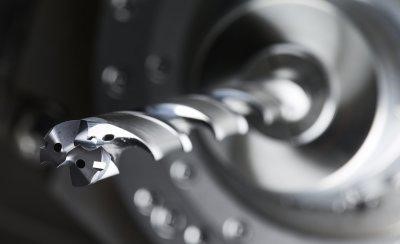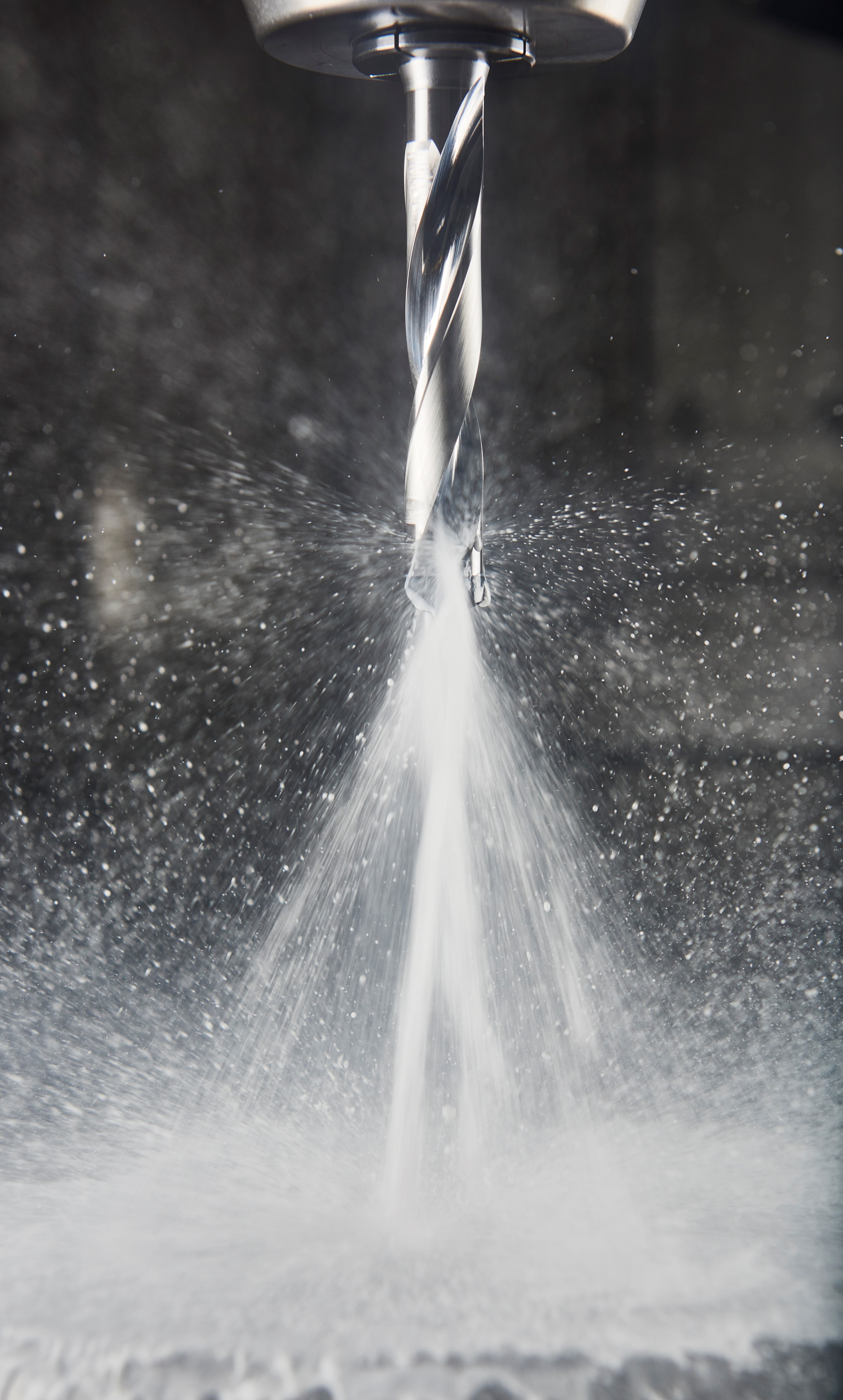What’s in a Name?
Why KenTIP FS? Alexander Schmitt, Senior Global Product Manager for Modular Drilling at Kennametal, says FS denotes the tool’s “full solid” carbide tip. It just looks like the tip of a solid carbide drill. That means the carbide tip fully covers and protects the steel holder from washing out, but he adds that the meaning goes a bit further. “The KenTIP FS not only looks like a solid carbide drill; it also works like one. So you can think of it as a fusion of solid carbide’s best characteristics together with the cost-effectiveness of indexable drilling tools.”
At first glance, the KenTIP FS appears to be like any other replaceable tip drill, with a disposable carbide insert, coolant through the tool, and a helical flute for efficient chip removal. The similarities end there, however. The KenTIP FS has a radically new design, one that incorporates a number of important features that separate it from the “me too” modular drilling crowd.
Keeping Cool
For starters, take a look at the flutes. Notice how smooth and shiny they are? That’s because they’re highly polished after final machining, a process that Kennametal has found greatly improves chip evacuation and reduces wash out near the tip. And instead of the two coolant holes found in most modular drill designs, the KenTIP FS has four—two at the tip and two in the chip gullet directly behind the head. This “multicoolant” approach provides greater coolant volume to prevent chip packing while simultaneously drawing heat away from the cutting zone, prolonging tool life and improving hole quality.
“Multicoolant allows us to tailor the cutting fluid needs to the application,” Schmitt explains. “For example, adhesion and flank wear are a big concern in stainless steels and cast irons. Inserts with HPL and HPC point styles have through the tool coolant channels to provide better lubrication in this area to overcome the issue. In steel though, it’s better to concentrate coolant to the rake and take the heat from the contact zone between chip and rake surface. So we eliminated the front coolant holes in our HPG geometry inserts to raise our insert tool life and improve chip breakage. In addition, this avoids built-up edge and makes the insert more rigid, which allows higher penetration rates in steel applications.”
Tuning Up
There’s more to application tuning than the number of coolant holes an insert has. The HPG geometry is available in a new, highly wear resistant carbide grade, KCP15A, designed especially for steel. Its newly-designed point angle and self-piloting chisel edge offers better positioning accuracy and hole straightness than other drills in this class, even under high feed rates. The insert corners are protected with small chamfers to reduce chipping, and the margins are similarly reinforced, making the HPG geometry suitable for the cross holes and inclined exits encountered in hydraulics manifolds, for example, or the stacked plates used in heat exchanger production.
If the world drilled only steel, HPG geometry inserts might be sufficient, but the aerospace industry needs stainless steels and super alloys, while automotive manufacturers make extensive use of cast iron. For the former, Kennametal offers the HPL geometry, which has a split point designed to reduce cutting forces and break up long-chipping aerospace and medical alloys. Like the HPG geometry, it too is available in a new grade, in this case KCMS15, a wear-resistant, fine-grain carbide with an anti-adhesive AlTiN coating that extends tool life. And for cast, ductile, and compacted graphite irons, the HPC geometry offers four margin lands and a radiused point that eliminates the exit chipping and cracking common with these materials, with a specially-designed chip gash that clears chips quickly in combination with the front coolant exits.
All three insert styles have 143-degree points, and specially-prepared, polished or honed edges for maximum tool life. “Between the HPG, HPC, and HPL geometries, the KenTIP FS can handle most anything a solid carbide drill can, but with far lower cost per part and equal or greater performance,” says Schmitt.




 copy 3.jpg?itok=jDQ0Lywg)





Talk to Us!
Leave a reply
Your email address will not be published. Required fields are marked *